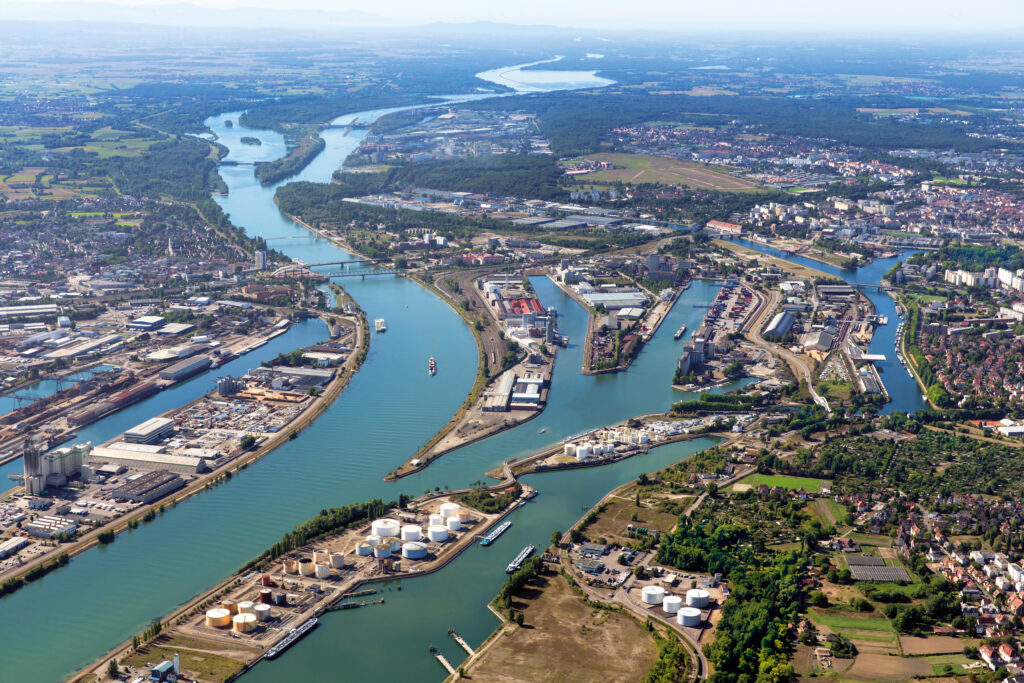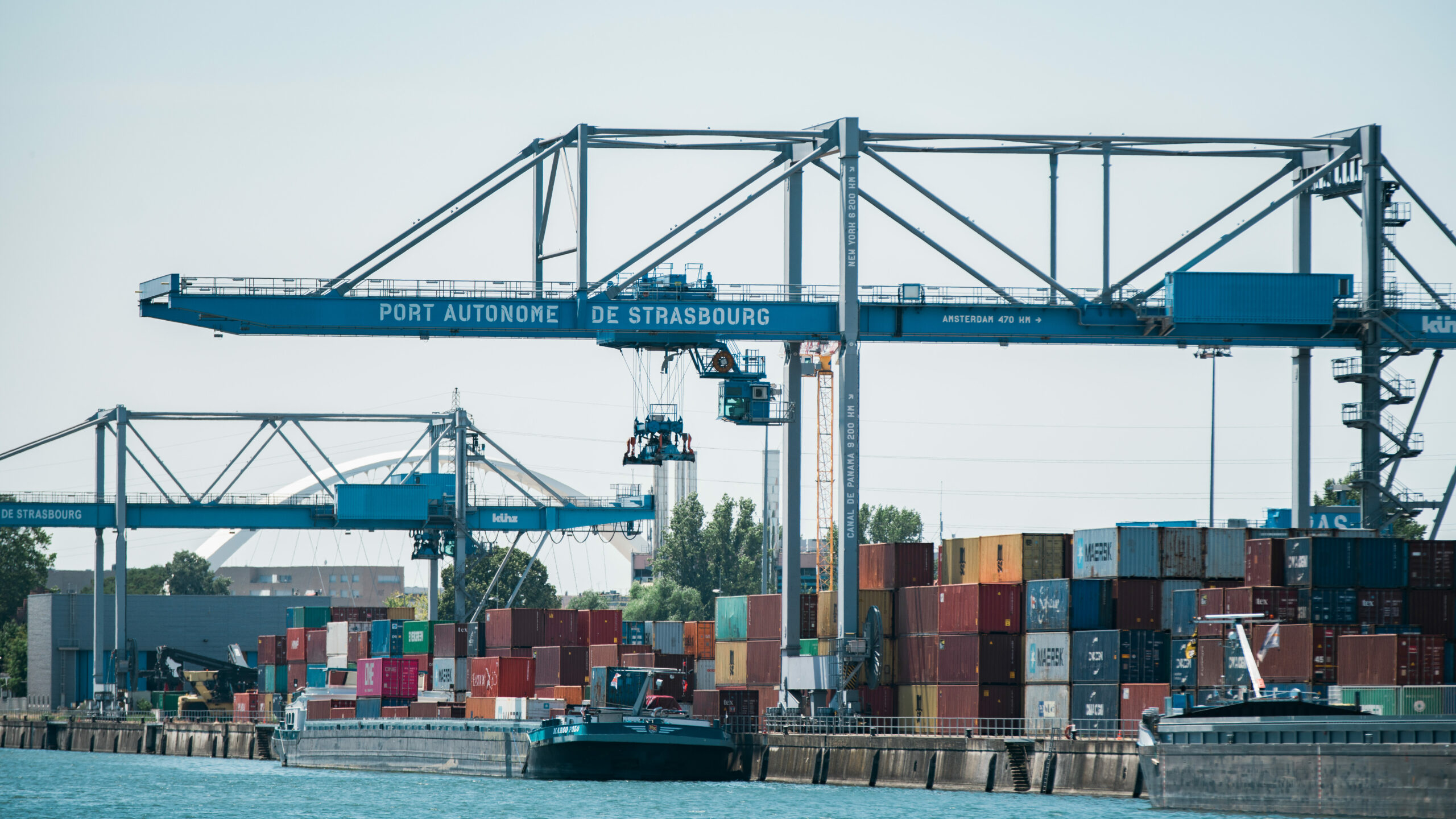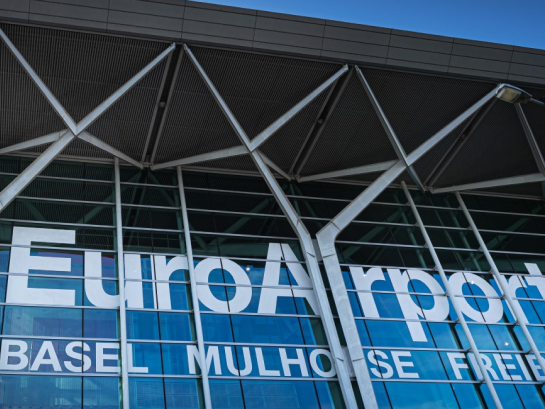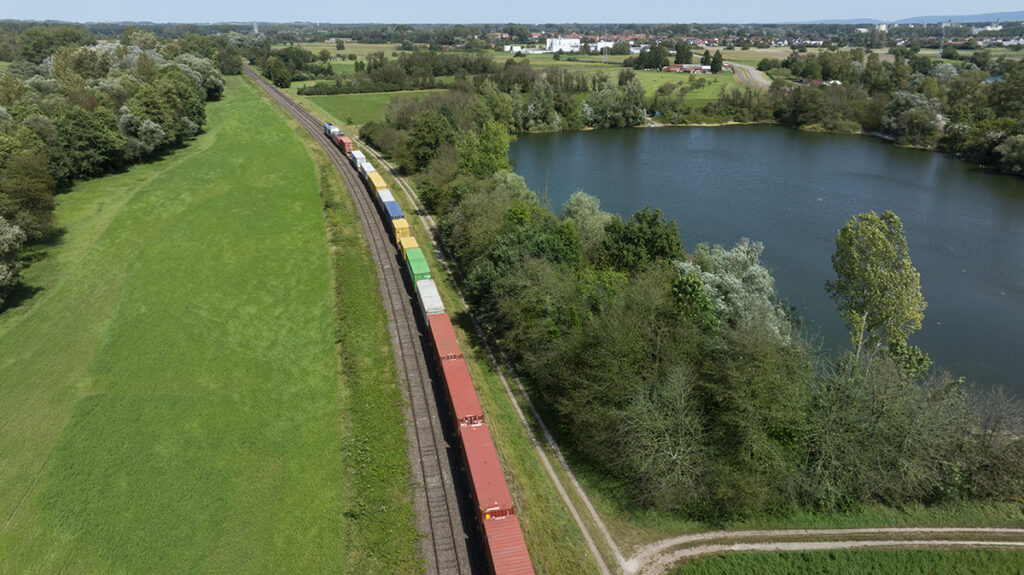Passenger and freight transportation
The Upper Rhine region in Europe is a key economic and demographic hub, with 100 million inhabitants and accounting for 30% of the European Union’s total GDP. Alsace, situated at the heart of this region, naturally serves as a central point for freight transport.
The extensive transportation network, including the nearby Rhine, allows local industries to efficiently distribute their products across European and global markets via North Sea ports.

Eight ports on the Rhine
Alsace is centrally located within the European waterway network, bordered for nearly 200 km by the Rhine River and connected to major French waterways via the Marne-Rhine Canal and the Rhône-Rhine Canal.
As Europe’s largest commercial waterway, The Rhine features eight port sites running from south to north through Alsace, equipped with modern logistics infrastructure. Many of these ports are directly linked to the rail network, enhancing and streamlining freight transfer.
The Rhine flows through Western Europe to the North Sea, offering direct access to global trade within 48 hours through major maritime ports such as Rotterdam, Antwerp, and Zeebrugge.

Strasbourg Ports
- 4 multimodal port sites across northern Alsace
The Ports de Strasbourg Group is France’s second-largest river port, with traffic levels comparable to some maritime ports. It acts as a key maritime gateway for the Grand Est region, handling an average of 8 million tonnes of river traffic per year.
Mulhouse-Rhin Ports
- 3 multimodal port sites in southern Alsace
The Mulhouse-Rhin Ports are France’s third-largest river ports, following Paris and Strasbourg, with an annual river traffic nearing 6 million tonnes. This number is supported by 1 million tonnes of rail traffic and 1.6 million tonnes of road traffic, bringing the total to 8.5 million tonnes.
Rhine Port Colmar Neuf-Brisach
- Multimodal Port Site in Central Alsace
This multimodal platform processes 1.4 million tonnes of goods annually, arriving by train, boat, or truck. The site employs about 30 people who handle daily operations, including loading and unloading transport units, stock management, shipments, train handling, and local industrial deliveries.
Two international airports

EuroAirport Basel-Mulhouse serves over 100 destinations and hosts more than 25 airlines. As one of France’s largest airports, it is well connected by highways, buses, and trains. The airport has 21,000 m² of cargo handling space across 7 modules, including several refrigerated areas. EuroAirport processes over 100,000 tonnes of air cargo each year.
Strasbourg-Entzheim Airport offers flights to 45 regular destinations across Europe and the world with 17 airlines. It features 8,000 m² dedicated to cargo handling, including 700 m² with temperature control. The airport processes over 40,000 tonnes of air cargo annually.
Nearby major international airports include Paris-Charles de Gaulle, Zurich Airport in Switzerland, and Frankfurt Airport in Germany. All three are accessible within less than 3 hours by road or train from Alsace and connect to nearly all global destinations.
A very dense railway network
Alsace is served by two high-speed rail lines: TGV Est Européen and TGV Rhin-Rhône. With four TGV stations in the region—Strasbourg, Colmar, Mulhouse, and Saverne—you can quickly connect to major European cities such as Brussels, Luxembourg, and Frankfurt, as well as other major French cities.
The regional railway network (TER) is among the most extensive and well-served in France, featuring over 130 stations across Alsace. For instance, the trip from Strasbourg to Mulhouse takes just 50 minutes!
TER – Schedules, traffic information, ticket purchases, and subscriptions
Additionally, many industrial zones in Alsace benefit from direct connections to the railway network, enhancing transportation and logistics for companies handling goods.
